Welcome to our How to Play Magic: The Gathering series!
Magic: The Gathering (“Magic” for short) is a trading card game filled with fantastic characters, worlds, and creatures that allow you to create unique decks to battle other players with. Here, we’ll go over the very basics of Magic. Later, we’ll go in-depth on different parts of the game.
Getting Started
To start playing, all you really need is a place to play, someone to play against, and a deck. Each player starts the game with 20 life. The goal is to reduce your opponent’s life total to zero before they do the same to you.
Before starting, determine who goes first in your game, and make sure to shuffle your deck. Once you put your deck within easy reach, it’s now known as the library.
Draw an opening hand of seven cards from the top of your library. If you’re the first player, you won’t draw an extra card on your first turn. But after that, each player draws a card at the start of their turn.

Cards and Their Parts
There are two basic types of cards in the game, lands and spells. The first thing you want to play is a land card. You can play one land per turn, putting it on the battlefield, where the action happens.
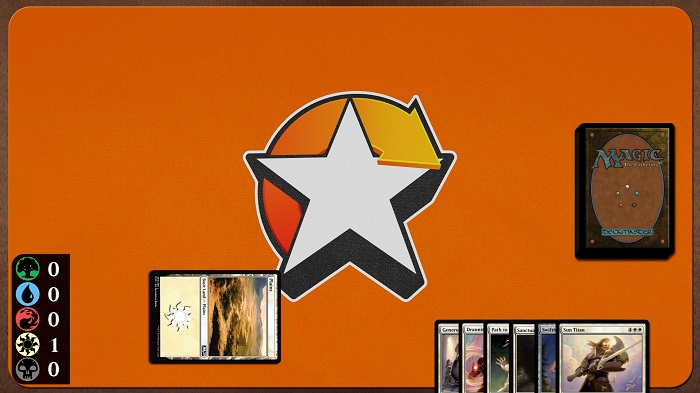
Turning a land sideways, called “tapping” it, produces mana and indicates that the card has been used for the turn. Mana is the resource that allows you to pay for your spells.
Spells have a cost printed in the upper-right-hand corner of the card. For example, Sanctuary Cat has one white sun symbol, so it requires one white mana to cast. You can use a Plains to generate that white mana. Then put your Sanctuary Cat onto the battlefield.
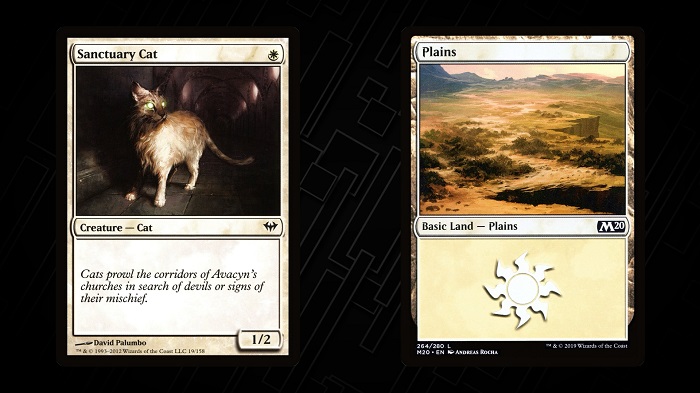
Now let’s look at Walking Corpse, which has a slightly different cost. This card has one black skull symbol and the number one in a gray circle. This means that the card costs one black mana plus one mana of any type to cast. You can use a Swamp to pay the one black mana and any land, like a Forest, to generate that other mana.

Creature Spells
Both Sanctuary Cat and Walking Corpse are creatures, a type of spell. These are the primary way to attack your opponent and reduce their life total to zero. In the bottom-right-hand corner of creature cards, you’ll see a box with two numbers. The first number represents the creature’s power, or how much damage it does. The second number represents its toughness, how much damage it can take in a turn before being destroyed.
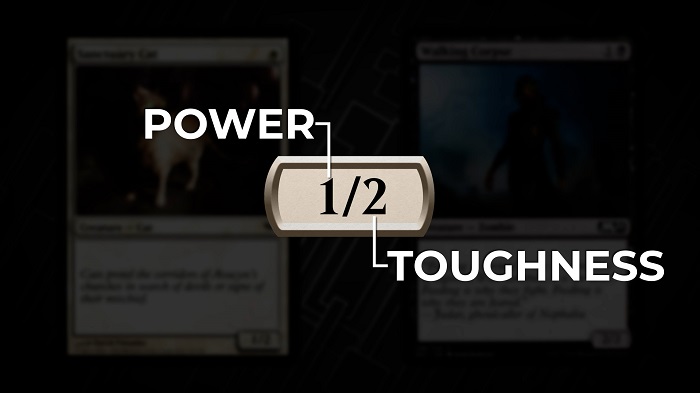
You can attack with your creatures once per turn during the combat phase. Creatures can only attack if they’ve been on the battlefield since the start of your turn. You tap creatures to attack, just like how you would tap lands to make mana. You can attack a player with any number of creatures you control. Your opponent then has the chance to block those attacking creatures with their own creatures. If they don’t block, the opponent takes damage and reduces their life total.
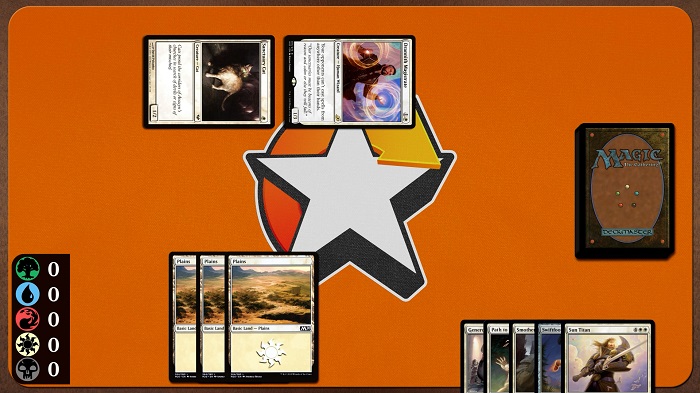
Trapped creatures can’t block. If you attack with a creature on your turn, it won’t be able to block on your opponent’s turn. We’ll dive into how combat works later.
Other Spells
Of course, there is more to Magic than just lands and creatures. You can also cast powerful one-time spells called instants and sorceries to flex your magical prowess.
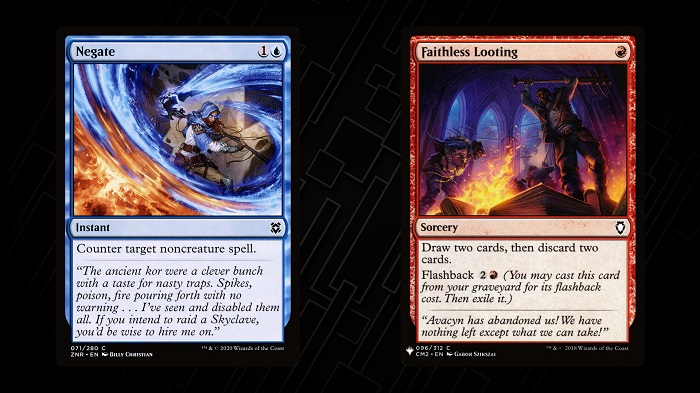
Enchantment and artifact cards stay on your battlefield to help you achieve your goals.
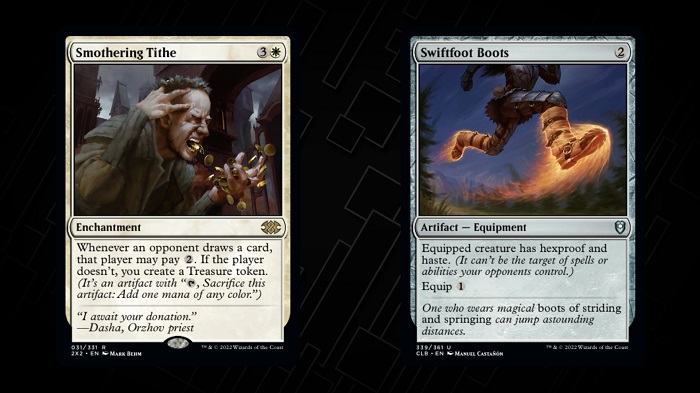
You can even summon the assistance of a famous Planeswalker from the Multiverse.
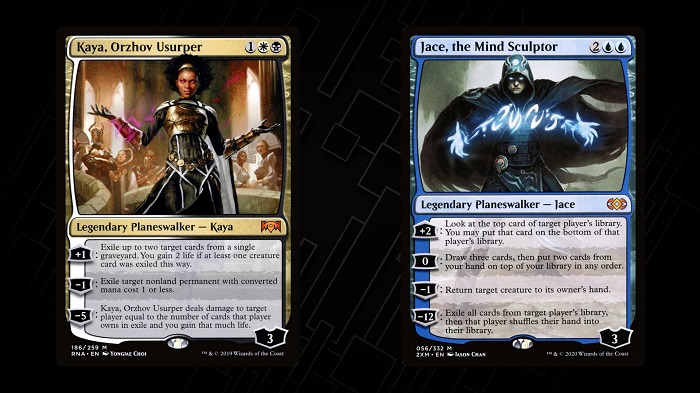
We’ll go over all the different types of cards in Magic later. All you need to know about them now is that they help you accomplish your goal of depleting your opponent’s life total while preserving your own.
Taking Turns
Players alternate taking turns, playing lands and spells, and attacking with their creatures until one player falls to zero life.
There are many phases and steps of a turn, but we’ll get into that later. We’ll also show you how and when spells can be cast, as well as what common abilities and effects do.
This is just the start of your journey and the Star City Games: How to Play Magic: The Gathering Series. We recommend you watch our Card Types video next, followed by our Steps of a Turn video. Thanks for reading and watching!
Next Article: Card Types

